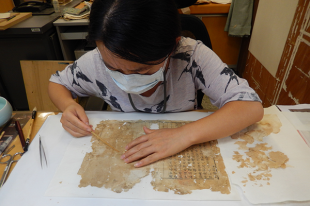Paging the book doctors


New chapter
In the Ming Dynasty (1368-1644) book Zhuanghuangzhi, or "a record for decoration", which focuses on the mounting of paper works onto bindings or scrolls, the author Zhou Jiazhou wrote: "Restoration (of ancient books) is like seeing a doctor. If the doctor is good, your illness will be gone immediately following the treatment. But if not, you may die taking the medicine. So if you cannot meet a good craftsman at that moment, you'd better keep your item as it is."
Consequently, it has become a motto among Chinese restorers of ancient books "to prolong the life of books is like being a good doctor".
Nevertheless, a good doctor may not be that easy to find.
By the time the National Center for Preservation and Conservation of Ancient Books was established in 2007, there were fewer than 100 full-time restorers of ancient texts in China, which left a huge gap for protection of the myriad precious pages.
"In the old days, the nurturing of restorers used to rely on the method whereby masters would guide apprentices," Rao explains. "It took years or even decades to train a qualified restorer this way."
It is estimated that at least 30 million ancient books are housed in China's public institutions, according to an ongoing national census by the national preservation and conservation center. Reality has prompted change.
According to Zhang, the deputy director of the center, 65 training sessions have been organized by the institution, and 12 regional training centers for ancient book restoration have been established nationwide.
The traditional master-apprentice inheritance method has also been retained. Restoration of ancient books was inscribed on the list of national-level intangible cultural heritage in 2008, and 32 tutors hired by the national preservation and conservation center, who have recruited 270 apprentices.
"Now, we have about 1,000 full-time restorers around the country," says Zhang. He says he is excited when recounting the statistics, adding that over 3.6 million pages of ancient texts have been fixed in the past decade.





































